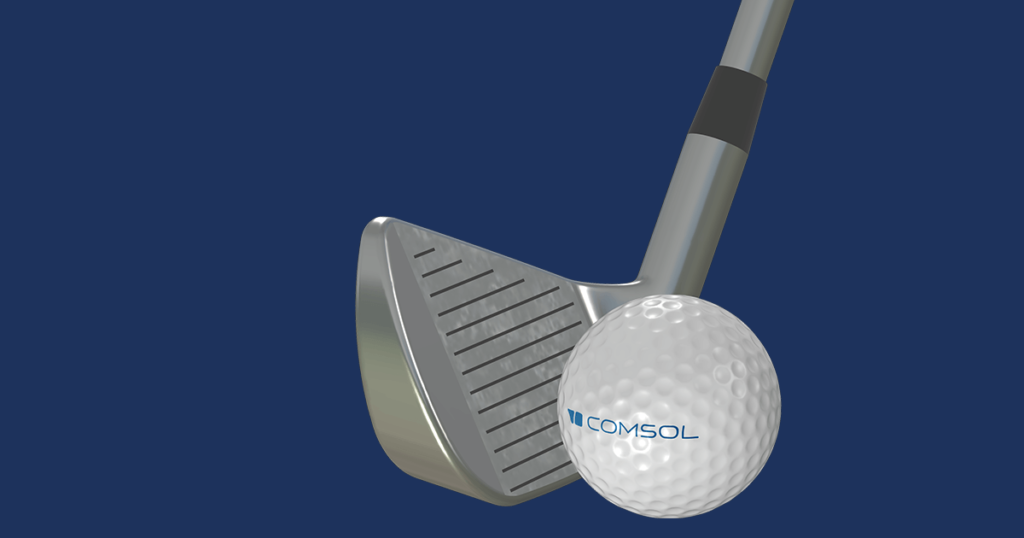Last Updated on October 25, 2023 by Alex PT
The terminal velocity of a golf ball is 72 miles per hour (116 km/h). This is the maximum speed that a golf ball can reach when falling into the air, assuming that it is not hit with any additional force.
The Table Below Contains Some Questions And Answers That Will Help You Get More Familiar With The Terminal Velocity Of An Object.
| How Long Does It Take A Ball To Reach Terminal Velocity? | To get to 90% of terminal velocity, it will take 8 seconds. However, you will definitely reach a much higher speed than terminal velocity if you’re falling from outer space. |
| What Is The Max Speed Of Terminal Velocity? | The terminal velocity is about 120 mph (200 km/h) in a stable belly-to-earth position. There’s a terminal speed of 240-290 km/h from a stable freefall head down position. |
| What Is The Terminal Velocity Of A 200-Pound Man? | The terminal velocity of a falling 200-pound man is approximately 145 mph (64.8 m/sec) according to some extensive research. |
How To Calculate Terminal Velocity

To calculate a terminal velocity of an object, you need to make use of the terminal velocity formula, which is; v = the square root of (2*m*g)/(p*A*C). To solve for V, which is terminal velocity, put the following values into the formula.
1. A = the object’s projected area. This means the area of the object if you projected it onto a plane that was perpendicular to the direction the object is moving.
2. m = mass of the falling object.
3. ρ = the density of the fluid the object is falling through.
4. C = the coefficient of the drag. The shape of the object determines the number. The coefficient of an object is normally to lower the more streamlined it is in the shape. You can look up some approximate drag coefficients
5. g = the acceleration due to gravity. It is approximately 9.8 meters per second on earth.
Then, find the mass of the falling object. The mass of an object is normally measured in kilograms or grams, in the metric system.
Since pounds is a measuring unit of force and not really of mass, you need to take note while using the imperial system. The pound-mass (IBM) is the unit of mass in the imperial system, which will definitely experience a force of 32 pound-force (Ibf) under gravitational force on the surface of the earth. Let’s take, for instance, a person actually weighs 160 Ibf with a mass of 5 Ibm even if the person originally weighs 170 pounds on earth.
After finding the mass of the falling object, you need to know the acceleration due to the gravity of the earth. The acceleration due to the gravity of the earth is 9.8 meters per second squared, or 32 feet per second squared.
Then, try to calculate the downward pull of gravity. The mass of the object multiplied by the acceleration due to gravity is equal to the falling force of the object after being pulled down, or F = MA. This number, multiplied by two, moves at the top of the formula for terminal velocity.
What Affects the Golf Ball Speed?
Golf ball speed is influenced by various factors, including:
- Clubhead Speed: The speed at which the clubhead strikes the ball greatly impacts its velocity. A faster swing generates more ball speed.
- Contact Point: The location on the clubface where the ball is struck affects speed. Hitting the sweet spot typically results in higher velocity.
- Ball Construction: Different golf balls are designed with varying core materials, dimple patterns, and layers, influencing their rebound speed off the clubface.
- Temperature and Altitude: Environmental conditions can impact golf ball speed. Higher altitudes and warmer temperatures can lead to increased ball speed due to lower air density.
- Wind Conditions: Headwinds or tailwinds can either hinder or enhance ball speed. A tailwind can boost the ball’s speed, while a headwind may reduce it.
- Elevation Change: The elevation change on a golf course can affect ball speed. Hitting downhill can increase speed while hitting uphill can decrease it.
- Launch Angle: The angle at which the ball leaves the clubface affects speed. A more optimal launch angle can lead to higher ball speed.
- Spin Rate: Backspin or sidespin can influence the ball’s trajectory and speed. Reducing spin can often result in greater distance.
- Equipment Quality: The quality of golf clubs, including drivers, irons, and golf balls, plays a role in ball speed. Technological advancements can enhance speed.
- Swing Mechanics: A golfer’s swing technique, including angle of attack and path, can impact ball speed. Efficient mechanics can maximize velocity.
- Fitness and Strength: A golfer’s physical condition and strength can affect clubhead speed, which, in turn, influences ball speed.
- Compression: Golf balls are categorized by compression ratings. A golfer’s swing speed should match the compression of the ball for optimal distance.
- Aerodynamics: The design and dimple pattern of the golf ball can influence its aerodynamic properties, affecting the air resistance and ultimately the speed.
- Course Conditions: The firmness and speed of the fairways and greens can influence ball speed on roll and bounce.
- Practice and Technique: Consistent practice and refining one’s golf technique can lead to better ball speed control.
Terminal Velocity vs. Maximum Velocity of a Golf Ball
Terminal velocity is the maximum speed that an object can reach when falling through a fluid (such as air) due to the force of gravity and the drag force of the fluid.
Maximum velocity is the fastest speed that an object can reach, regardless of the forces acting on it.
Terminal velocity of a golf ball:
- Speed: 72 miles per hour (116 km/h)
- Factors affecting terminal velocity:
- Mass of the golf ball
- Size of the golf ball
- Shape of the golf ball (dimples help to reduce drag)
- Density of the air
Maximum velocity of a golf ball:
- Speed: Over 150 miles per hour (241 km/h)
- Factors affecting maximum velocity:
- The initial speed of the golf ball (when hit with a club)
- Angle of the Clubface
- Conditions of the golf ball (spin, grooves, etc.)
Table:
| Characteristic | Terminal velocity | Maximum velocity |
|---|---|---|
| Speed | 72 miles per hour (116 km/h) | Over 150 miles per hour (241 km/h) |
| Factors affecting | Mass, size, shape, and density of the air | Initial speed, angle of the clubface, conditions of the golf ball |
drive_spreadsheetExport to Sheets
Example:
A golf ball hit with a club at a speed of 150 miles per hour will reach a maximum velocity of over 150 miles per hour, even though its terminal velocity is only 72 miles per hour. This is because the initial speed of the golf ball is greater than its terminal velocity.
It is important to note that the maximum velocity of a golf ball is not always achievable. Factors such as the wind and the condition of the golf ball can affect its speed.
How Long Does It Take A Ball To Reach Terminal Velocity?
To get to 90% of terminal velocity, it will take 8 seconds. However, you will definitely reach a much higher speed than terminal velocity if you’re falling from outer space. Interestingly, you will slow down as you reach the atmosphere. You might just burn up like a meteorite if you’re coming in from a far distance.
What Is The Max Speed Of Terminal Velocity?
The terminal velocity is about 120 mph (200 km/h) in a stable belly-to-earth position. There’s a terminal speed of 240-290 km/h from a stable freefall head-down position. To speed of around 500 km/h (310 mph), is, however, accomplished through a further minimization of drag by streamlining the body.
How Do You Find The Terminal Velocity Of A Falling Object?
In layman’s language, the square root of the quotient of twice the object’s total weight all over the object’s frontal area product, the gas density of the medium, and its drag coefficient is equal to the terminal velocity of the object.
What Is The Terminal Velocity Of A 200-Pound Man?
The terminal velocity of a falling 200-pound man is approximately 145 mph (64.8 m/sec) according to some extensive research.
| Falling Object | Mass | Area | Terminal Velocity | |
| Skydiver | 75 kg | 0.7 m2 | 60 m/s | 134 mi/hr |
| Baseball (3.66cm radius) | 145 gm | 42 cm2 | 33 m/s | 74 mi/hr |
| Golf ball (2.1 cm radius) | 46 gm | 14 cm2 | 32 m/s | 72 mi/hr |
| Hail stone (0.5 cm radius) | 0.48 gm | 0.79 cm2 | 14 m/s | 31 mi/hr |
| Raindrop (0.2 cm radius) | 0.034 gm | 0.13 cm2 | 9 m/s | 20 mi/hr |
However, if we make use of a drag coefficient of C = 0.5 gives and assume the hailstones to be spherical, it gives the following:
| Radius (cm) v (km/hr) v(m/s) v(mi/hr) .01 7 1.9 4.3 0.1 22 6.1 13.7 0.2 31 8.6 19.3 0.5 49 13.6 30.5 1.0 69.5 19.3 43.2 2.0 98.3 27.3 61 3.0 120 33.4 74.8 5.0 155 43.2 96.6 10.0 220 61 136 |
Closing Thoughts
The bottom line is that the terminal velocity of a falling object is the identical velocity as the wind required to help support the mass of the item. As outlined by some research, the terminal velocity of any golf ball is approximately thirty-two meters per second. We’ve come to the closing chapter of this informative article. We hope you were able to find resources in your quest to know the terminal velocity of a golf ball. Please do not hesitate to contact us for questions or comments. Thanks!
References:
https://earlygolfer.com/what-is-the-maximum-velocity-for-a-golf-ball/
https://www.quora.com/What-would-be-the-terminal-velocity-of-a-golf-ball-falling-from-a-skyscraper

Hi! I’m Alex PT. I hold a Bachelor’s degree in Sports Management from Indiana University and have over seven years of valuable experience working in a Sports Event Management Company. I founded SportBlurb with the passion for bringing you the latest, most insightful, and engaging content in the world of sports. So, whether you’re a die-hard fan or want to stay informed, I’ve got you covered!

